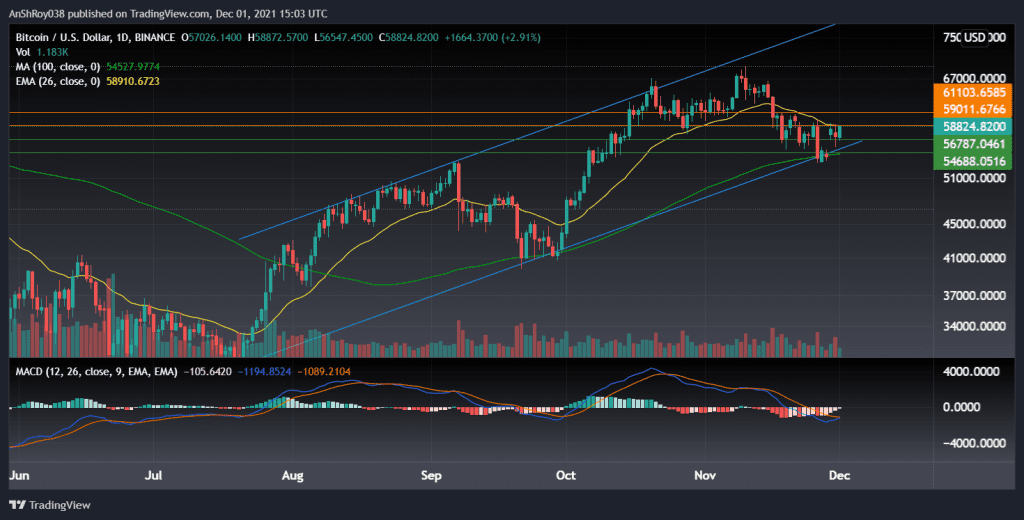
Key Takeaways:
- Fidelity Investements will launch a spot Bitcoin ETF in Canada.
- The firm decided not to wait around for SEC approving spot Bitcoin ETFs in the US.
NEW DELHI (CoinChapter.com) — One of the world’s largest asset managers, US-based Fidelity Investments plans to launch a spot Bitcoin ETF in Canada, subject to regulatory approval.
The fund, Fidelity Advantage Bitcoin ETF, is currently pending approval on a Canadian exchange. Once approved, it will make Fidelity the biggest asset manager that offers Bitcoin exposure to its clients, Bloomberg senior ETF analyst Erick Balchunas said on Twitter.
Fidelity Investments has over $4 trillion in assets under management, placing it in the top 5 list of the largest asset managers.
Investors in the US are still waiting for the Securities and Exchange Commission (SEC) to approve a spot Bitcoin ETF after it rejected VanEck Associates’ application in early Nov. However, the SEC seems to have no problem with Bitcoin futures ETF.
Also Read: Bitcoin momentum dependant on MACD cross on BTC charts, here’s why.
Fidelity would actively manage the new fund and directly buy Bitcoins instead of providing BTC exposure through derivatives instruments. The investment manager is also waiting for SEC approval to launch a spot Bitcoin ETF in the US.
Fidelity recently received regulatory approval for Fidelity Clearing Canada, the country’s first entity to offer digital currency trading and custody solutions for institutional investors.
While still a pipe dream in the US, Bitcoin ETFs are already available to investors in various countries, including Canada, Dubai, and Brazil.
Bitcoin ETFs – Spot And Futures
An ETF, or Exchange Traded Fund, is an investment vehicle, which investors can publicly trade like a stock. However, it tracks the performance of an underlying asset or index. It provides investors exposure to the underlying asset, like gold, without investors having to own the asset.
A Bitcoin ETF provides investors exposure to the world’s largest cryptocurrency.
Furthermore, Bitcoin ETFs can be either a futures ETF or a spot ETF. A futures ETF is a fund in which investors buy or sell a contract that represents the value of Bitcoin. However, when trading Bitcoin futures, investors do not own the underlying crypto.
Related: ProShares Bitcoin ETF’s debut is the strongest ever on Wall Street; what’s next for BTC?
Instead, the trader has a contract promising the buying or selling of the crypto at a future date. In essence, the Bitcoin futures ETF tracks the price of Bitcoin futures, not the cryptocurrency itself.
Meanwhile, a spot Bitcoin ETF tracks the price of physical Bitcoins. It allows investors exposure to cryptocurrency through a regulated and familiar financial product. In a Bitcoin ETF as well, the investors do not own Bitcoin directly. Instead, the asset management firm buys and holds it for them.
Meanwhile, Bitcoin Prices.
BTC continues to trend upward following a struggling comeback from last week’s Covid FUD fueled crash. The decline saw Bitcoin test its ascending trendline and 100-day MA line support confluence over the weekend. However, BTC prices started the current week in an uptrend.
Recommended: Bitcoin week ahead Ep19: BTC looks poised to hit $60K amid Omicron FUD.
On Nov 30, BTC challenged the $59,000 price level before retreating and closing the day down by 2%. At present, Bitcoin faces immediate resistance at $59,011, near its 26-day EMA. The current uptrend would likely see BTC test the $61,103 price target before any pullbacks occur.

BTC prices jumped over 4% between low ($56,547) to high ($58,872) on Dec 1, which might be a likely reaction to news of Fidelity’s spot ETF launch. However, if Bitcoin’s uptrend loses steam, immediate support for BTC is at $56,787. Sustained selling sentiment would likely see BTC retest the ascending trendline support.
Meanwhile, trend-based momentum oscillator MACD is forecasting bearish momentum for BTC. However, bars on the MACD histogram are contracting, indicating the difference between the MACD line (difference between 12-day and 26-day) and its signal line (9-day EMA of MACD) is decreasing.
With the MACD line moving upwards, a bullish crossover is likely to occur soon. A bullish crossover occurs when the MACD line moves above its signal line and often acts as a bullish catalyst for an asset.
At present, BTC is trading at $58,600, up 2.53% on the day.


